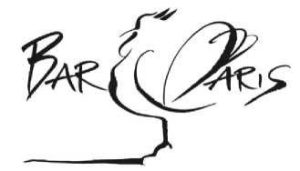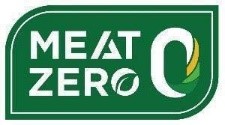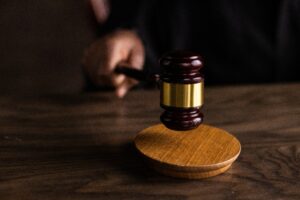Co-branding: Strategy, Opportunities, and Challenges
By Dreyfuslawfirm
Co-branding has emerged as an indispensable strategy for companies aiming to extend their influence, enhance brand equity, and foster product innovation. However, this form of multi-brand collaboration necessitates meticulous planning and rigorous scrutiny due to its inherent risks. This article delves into the essential elements of co-branding, both from marketing and legal perspectives, while also identifying the opportunities and challenges associated with these strategic alliances.
Strategic Alignment and Value Convergence
The success of co-branding hinges on the precise strategic alignment between partner brands. These entities must share fundamental values and pursue compatible strategic goals, a condition necessary to establish a seamless collaboration and leverage potential synergies. Furthermore, each brand must target similar or complementary audiences to ensure a positive market impact and maximize the partnership’s overall outcome.
Mutual Benefits and Complementary Competencies
The core of successful co-branding lies in the creation of shared value. Co-branding thrives when each partner leverages its unique strengths: one brand may possess cutting-edge technological expertise, while another has established market recognition. By merging these distinct competencies, brands can offer high-value products or services unattainable independently, generating synergistic outcomes that exceed the sum of individual contributions.
Reputation and Risk Management
The reputation of partners is a critical factor in co-branding initiatives. Associating with a brand that has a questionable or undeveloped reputation can impair the overall image of the initiating company. Thus, thorough due diligence is paramount to evaluate the prospective partner’s stability and ensure their alignment with the project’s dynamics. Risks, including those related to consumer perception, must be identified and thoroughly assessed.
Legal Considerations: Intellectual Property and Contractual Agreements
Legal considerations are fundamental in ensuring the stability and viability of a co-branding partnership. Intellectual property (IP) rights concerning trademarks, logos, and co-created content must be clearly defined from the outset. Comprehensive contractual agreements are necessary to delineate each party’s roles and responsibilities, including revenue-sharing clauses and financial obligations. These agreements should incorporate predetermined dispute resolution mechanisms aimed at preventing and managing potential conflicts throughout the collaboration.
Quality Control and Consumer Perception
Quality control is another major aspect of co-branding. The perceived quality of co-branded products or services must be maintained to avoid damaging the brand image, which could negatively impact both entities. Quality standards must be established early and adhered to strictly to ensure consistency and protect the reputation of each partner.
Recent Statistics: Growth and Evolution of Co-branding
Recent data underscores the growing prevalence of co-branding: approximately 65% of marketing executives view these partnerships as essential for brand growth. Moreover, 71% of consumers report being more inclined to purchase a product co-branded with a trusted brand. These statistics highlight the importance of selecting strategic partners to maximize growth and reinforce consumer trust.
Expanding Industries and Digital Integration
Several sectors are distinguished by their effective use of co-branding:
– Technology: Partnerships between technology firms and health applications.
– Food and Beverages: Creation of unique products through collaborations between snack and confectionery brands.
– Fashion: Limited-edition collections that are often highly publicized and impactful.
– Automotive: Integration of advanced technologies through collaborations with high-tech companies.
These industries leverage co-branding to innovate, reach new market segments, and create unique value propositions, often utilizing digital strategies such as video marketing on social media platforms.
Challenges and Risks of Co-branding
Despite its numerous benefits, co-branding also presents challenges. Among the most significant are brand dilution, differences in corporate culture, and quality control issues. A major difficulty is ensuring equitable benefit distribution between partners to avoid tensions or resentment. Proactive management, through clear contracts and regular communication, is crucial to prevent these issues and guarantee the partnership’s success.
Conclusion: Optimizing Co-branded Collaborations
Co-branding offers a unique opportunity to expand each brand’s reach and enhance overall credibility, provided that the inherent challenges are fully understood. Rigorous strategic planning, structured risk management, and a clear delineation of roles and responsibilities are essential for maximizing success. With a methodical approach and anticipation of obstacles, companies can effectively leverage the unique advantages of co-branding while mitigating potential pitfalls.
Dreyfus Law Firm partners with an international network of lawyers specializing in intellectual property.
Follow us on social media!




 v
v 

 At Dreyfus, we understand the critical importance of protecting and valuing your company’s intangible assets. This is why we offer tailored support through the IP Strategy Diagnostic, an initiative supported by Bpifrance.
At Dreyfus, we understand the critical importance of protecting and valuing your company’s intangible assets. This is why we offer tailored support through the IP Strategy Diagnostic, an initiative supported by Bpifrance.


 As an
As an
 An intellectual property attorney is a lawyer specialized in intellectual property law, who has a mission to support the protection of intellectual creations. Intellectual property law includes industrial property such as patents, trademarks and designs, as well as literary and artistic property. Intellectual property lawyers have a unique set of skills and knowledge related to filing, drafting contracts, as well as litigation related to intellectual property rights.
An intellectual property attorney is a lawyer specialized in intellectual property law, who has a mission to support the protection of intellectual creations. Intellectual property law includes industrial property such as patents, trademarks and designs, as well as literary and artistic property. Intellectual property lawyers have a unique set of skills and knowledge related to filing, drafting contracts, as well as litigation related to intellectual property rights.




 The concept of Metaverse is nothing new. This term was first introduced by Neal Stephenson, in his science-fiction novel “Snow Crash” as a “form of human life and communication in a virtual three-dimensional space through a digital avatar”. As of today, this new world is no more science-fiction but part of our world.
The concept of Metaverse is nothing new. This term was first introduced by Neal Stephenson, in his science-fiction novel “Snow Crash” as a “form of human life and communication in a virtual three-dimensional space through a digital avatar”. As of today, this new world is no more science-fiction but part of our world.